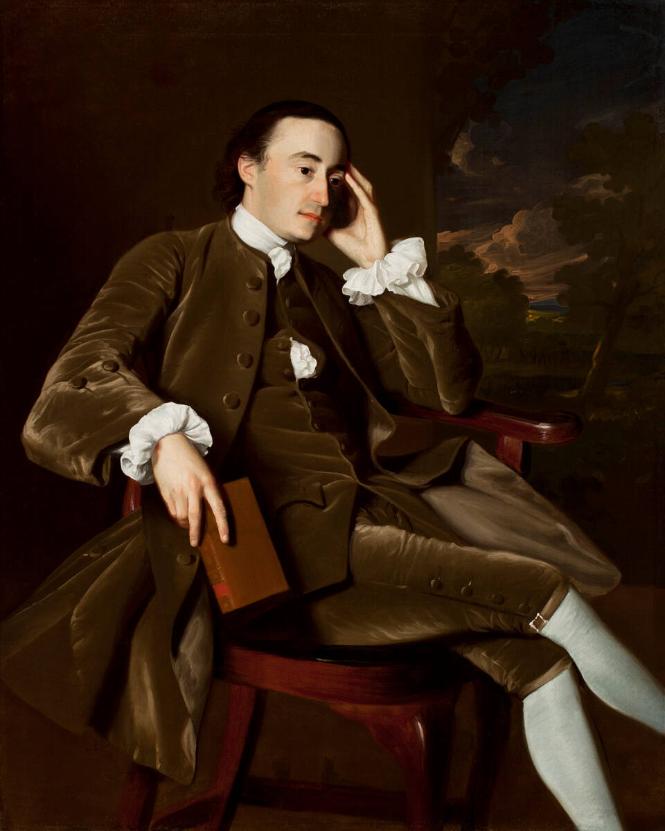August 2017 – March 2021

John Singleton Copley, John Bours, about 1763, oil on canvas. Funds from the bequest of Mrs. Hester Newton Wetherell, 1908.7.
The paintings on view in the Lower Third galleries celebrate an American story of mercantile exchange, rational thought, and military prowess. As with most portraits, however, these paintings depict the sitters as they wish to be seen–their best selves–rather than simply recording appearance. The sitters are shown in poses and with objects intended to define them, such as the fine fabrics and coral beads in the portraits of John, Elizabeth, and Mary Freake; the pensive gesture in the painting of John Bours; and the pose and cannon in the portrait of Captain-Lieutenant James Larabee.
Yet a great deal of information is effaced in these works, including the sitters’ reliance on chattel slavery, often referred to as America’s “peculiar institution.” Many of the people represented here derived wealth and social status from this system of violence and oppression, which was legal in Massachusetts until 1783 and in regions of the United States until 1865. This tragic history has long been overlooked in our galleries. To address this omission, we have added special labels to indicate the sitters’ participation in slavery.
For fuller biographies of the figures featured in these galleries, we invite you to visit our online resource, Early American Paintings in the Worcester Art Museum.
